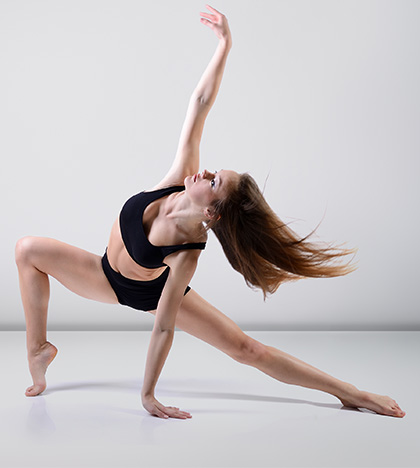It’s all In the Details! Helping Your Students to Fine Tune Their Technique
 Having been a competition judge for the past twenty years my eye is trained to look for details. It is no secret that attention to detail always pays off. It does, in fact, make the difference between something being mediocre, good or excellent. So often I see numbers where the concept is good, the choreography works well but no attention has been directed to all the little details that make the difference between something being a winner or not!
Having been a competition judge for the past twenty years my eye is trained to look for details. It is no secret that attention to detail always pays off. It does, in fact, make the difference between something being mediocre, good or excellent. So often I see numbers where the concept is good, the choreography works well but no attention has been directed to all the little details that make the difference between something being a winner or not!
So what kind of details are we looking for?
- First of all there are the technical details. Things like finishing off all arm movements, legs fully stretching on leaps and feet pointed anytime they leave the floor unless a flexed foot is called for in the choreography. So often these details are overlooked and the emphasis is put on the amount of tricks that are executed. Tricks are only effective if they are technically correct and so often it is because the dancer is not aware of how important those little details can be that the trick becomes a disaster.
- Second of all we need to look at the difference that details can make not only in a solo but also in a group setting. The Rockettes would not be performing at Radio City every year if they were not totally together and detailed in every way. The corps de ballet at American Ballet Theater would not receive any accolades unless their lines were straight, their heads, arms and feet all going in the same direction and their eye focus exact.
So how can we, as teachers help the dancers become aware of what they need to do to make their work detail orientated? I would suggest having them write down in rehearsal each detail that they need to remember for each particular step. It is very hard for any dancer to remember all the corrections and will certainly help them if they have a little book that they can jot things down in and carry in their dance bags, something that they can refer to at any time, especially before a performance of any kind. Have them write reminders in bullet form so that it is quick to read and quick to remember.
Sometimes dancers think that because they are in a large group that it doesn’t matter if they know all the counts and that they will not be noticed in the back. When I am judging I almost always look to the back of the group before I take in the front row.
There you will find the weak links. This, of course does not have to happen if everyone is on the same page. Many a famous dancer was discovered in the back row of a show.
As teachers we need to make sure that in the daily classes we reinforce to the students the importance of paying attention to details. Here are a few ways that I use to help the dancers to understand not only what the details are but how to fix them.
- Take one exercise in each class and have them break it down in minute detail. What the feet are doing, how the body and arms are relating to each other, where the head is placed in relation to the arms and where the eye focus should be.
- Have each dancer break down a different step in class or rehearsal on paper and then have them demonstrate their break down.
- Make each dancer perform their competition group number one by one. This is a great way to find out if they are totally secure with not only the choreography but all the counts.
- Encourage the dancers to make a list of the 5 most important details that they can think of for any number.
- Discuss their answers with them and let them know how terrific they look when they do remember all those tiny details.
Dancers will only be able to understand the importance of being detailed in their work if they see it for themselves and are made aware of it by us, their teachers. Sometimes we, as teachers, need to take a step back and perhaps a closer look to make sure that in class we are being as careful as we are hoping our students will be in finishing everything off in a disciplined way to ensure that they move forward with their training in the best way possible.
For more great tips visit danceteacherweb.com!



